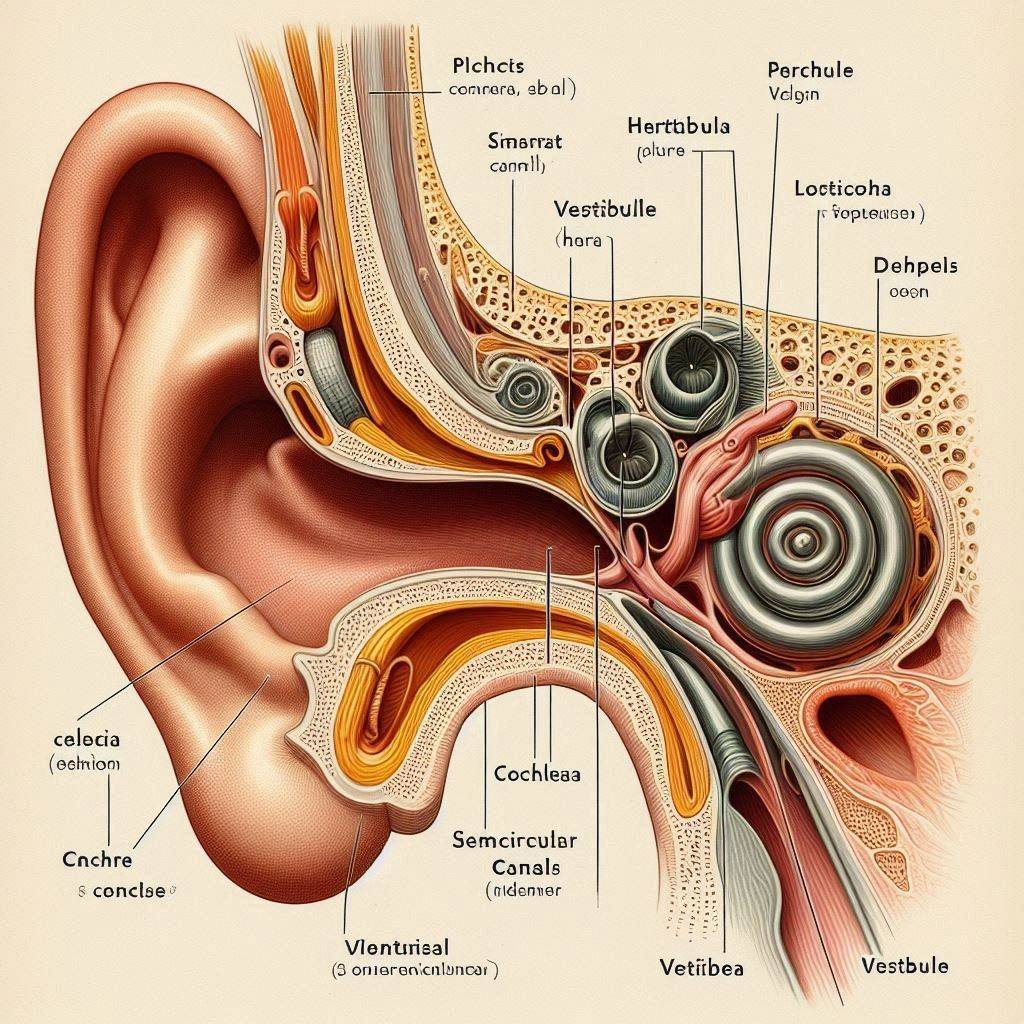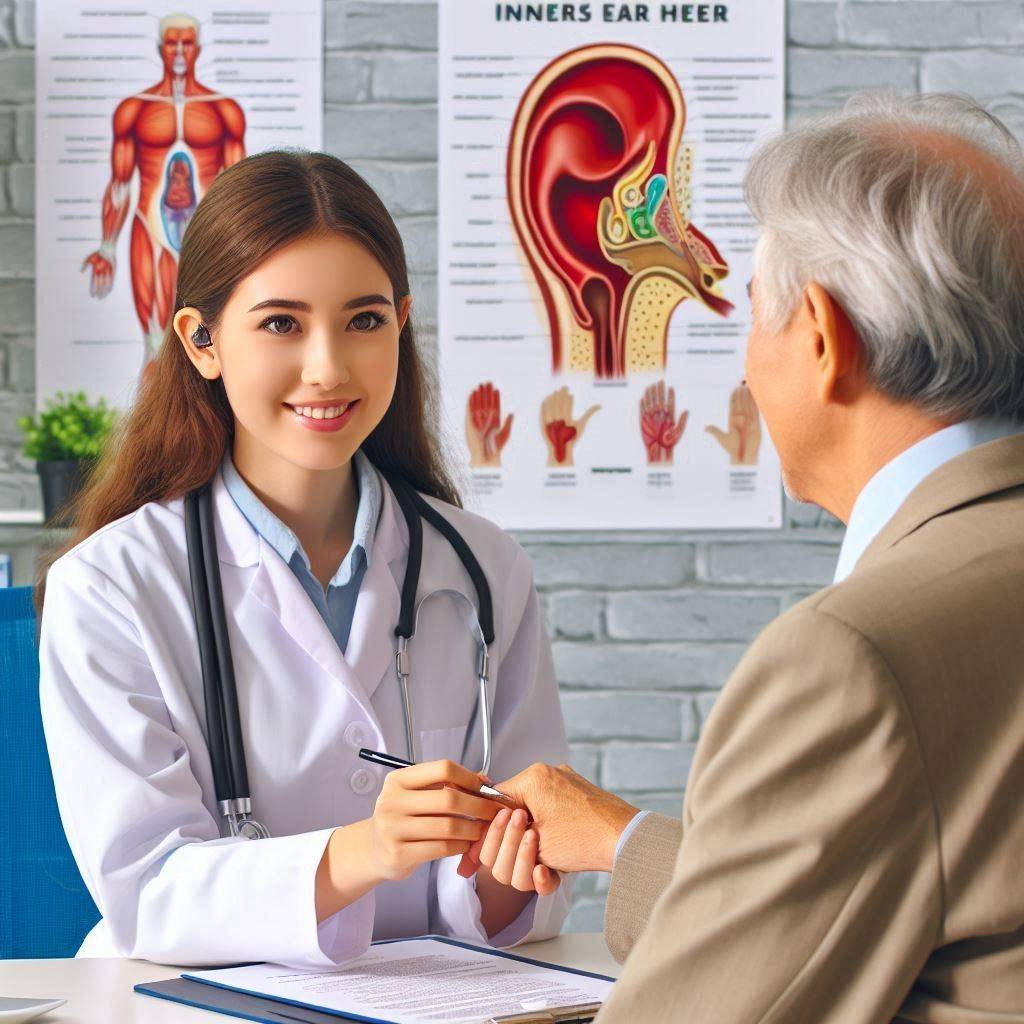Vertigo: Facts About Causes, Symptoms, and Breakthrough Treatments
Discover the causes, symptoms, and effective treatments for vertigo. Learn how to manage this disorienting condition and regain your balance and quality of life.
Introduction
Vertigo is a disorienting sensation of spinning or dizziness. Common causes include inner ear issues and migraines. Symptoms range from mild to severe. Effective treatments include vestibular rehabilitation, medication, and lifestyle changes. Consult a doctor for proper diagnosis and treatment.
Understanding Vertigo: More Than Just Dizziness
It is often misunderstood as simple dizziness, but it’s a specific sensation of movement when you’re stationary. As someone who has experienced Giddiness firsthand, I can tell you it’s an unsettling feeling that can significantly affect your daily life.
Key facts :
- It’s a symptom, not a condition
- Can last from seconds to days
- Affects 15-20% of adults annually
- More common in older adults and women
The Science Behind Vertigo: How Your Balance System Works
To truly understand Giddiness, we need to explore how our balance system functions:
a) Vestibular system in the inner ear
b) Visual input from our eyes
c) Proprioception of our muscles and joints
When these systems don’t work in harmony, lightheadedness can occur.
Common Causes of Vertigo: Unraveling the Mystery

Through my research and conversations with people living with Giddiness, I’ve found these to be the most frequent causes:
a) Benign Paroxysmal Positional Vertigo (BPPV)
b) Vestibular neuritis or labyrinthine
c) Meniere’s disease d) Vestibular migraine e) Acoustic neuroma
Recognizing Vertigo Symptoms: Beyond the Spin
It isn’t just about feeling dizzy. From my experience and discussions with others, symptoms can include:
- Sensation of spinning or tilting
- Nausea and vomiting
- Balance problems
- Headaches
- Nystagmus (involuntary eye movements)
- Tinnitus (ringing in the ears)
Diagnosing Vertigo: The Road to Answers

Getting a proper diagnosis is crucial. Here’s what you can expect:
a) medical history review
b) Physical examination
c) Dix-Hallpike test
d) Imaging tests (CT or MRI scans)
e) Vestibular function tests
10 Effective Treatment Strategies for Vertigo You Need to Know
- Vestibular Rehabilitation Therapy (VRT)
It often responds well to specialized exercises designed to retain your balance system. As someone who’s undergone VRT, I can attest to its effectiveness.
Key aspects of VRT:
- Gaze stabilization exercises
- Balance training
- Habituation exercises
- Cardiovascular conditioning
A typical VRT program lasts 4-8 weeks, with exercises performed daily at home.
- Canalith Repositioning Procedures
For Benign Paroxysmal Positional Vertigo (BPPV), these maneuvers can provide quick relief:
a) Epley Maneuver:
- Step-by-step guide:
- Sit upright on a bed
- Turn the head 45 degrees to the affected side
- Quickly lie back with your head hanging off the bed
- Wait 30 seconds
- Turn your head 90 degrees to the opposite side
- Wait 30 seconds
- Roll onto your side in the same direction
- Slowly return to a sitting position
b) Semont Maneuver
c) Foster Maneuver (Half Somersault)
- Medications for Vertigo Management
While not a cure, certain medications can help manage Swaying sensation symptoms:
a) Antihistamines (e.g., Meclizine, Dimenhydrinate)
- How they work: Block signals to the brain that cause dizziness and nausea
- Dosage: Typically, 25-50mg every 4-6 hours as needed
- Side effects: Drowsiness, dry mouth
b) Anti-nausea medications (e.g., Ondansetron)
- How they work: Block signals in the brain that trigger nausea and vomiting
- Dosage: Usually 4-8mg every 8 hours as needed
- Side effects: headache, constipation
c) Diuretics (for Meniere’s disease)
- How they work: Reduce fluid buildup in the inner ear
- Example: Hydrochlorothiazide, 25-50mg daily
- Side effects: Increased urination, electrolyte imbalance
- Lifestyle Modifications
Simple changes in daily habits can significantly affect vertigo management.
a) Dietary changes:
- Reduce salt intake (aim for less than 2,000mg/day)
- Limit caffeine and alcohol consumption
- Stay hydrated (aim for 8 glasses of water daily)
- Consider a low-tyramine diet for vestibular migraines
b) Stress management:
- Practice mindfulness meditation (start with 5-10 minutes daily)
- Try progressive muscle relaxation
- Engage in regular exercise (30 minutes of moderate activity most days)
c) Sleep hygiene:
- Maintain a consistent sleep schedule
- Create a relaxing bedtime routine
- Limit screen time before bed
- Physical Therapy for Vertigo
Beyond VRT, targeted physical therapy can help:
- Manual therapy for cervical Swaying sensation
- Proprioceptive training
- Postural correction exercises
- Tailored home exercise programs
- Cognitive Behavioral Therapy (CBT)
CBT can be particularly helpful for managing anxiety related to vertigo:
- Identify and challenge negative thought patterns
- Develop coping strategies for vertigo episodes
- Gradual exposure to feared situations
- Relaxation techniques
A typical course of CBT involves 8-12 weekly sessions.
- Surgical Interventions
In rare cases where conservative treatments fail, surgery may be considered:
a) Labyrinthectomy:
- Removes the entire inner ear balance system
- Used for severe, unilateral Swaying sensation
- Results in permanent hearing loss in the affected ear
b) Vestibular Nerve Section:
- Severs the vestibular nerve
- Preserves hearing
- Highly effective for vertigo control
c) Endolymphatic Sac Decompression:
- Used for Meniere’s disease
- Relieves pressure in the inner ear
[NOTE: Surgical options are typically considered as a last resort.
- Vestibular Implants
An exciting emerging technology for severe bilateral vestibular loss:
- Similar to cochlear implants, but for balance
- Electrically stimulates the vestibular nerve
- Currently in clinical trials
- Promising results for improving balance and reducing Giddiness
- Acupuncture for Vertigo
While research is ongoing, some studies suggest acupuncture may help with Dizziness:
- Targets specific points related to balance
- Typically involves 10-12 sessions
- May help reduce the frequency and severity of lightheadedness episodes
- Home Remedies and Natural Treatments
Some people find relief from lightheadedness with these natural approaches:
a) Ginger:
- Natural anti-nausea properties
- Try ginger tea or supplements (discuss dosage with your doctor)
b) Essential oils:
- Peppermint or lavender oils may help with dizziness
- Use in a diffuser or diluted for topical application
c) Hydration:
- Aim for at least 8 glasses of water daily
- Consider electrolyte-rich drinks during dizziness episodes
d) Vitamin D supplementation:
- Some studies link Vitamin D deficiency to giddiness
- Discuss appropriate dosage with your healthcare provider
Living with Vertigo: Practical Tips for Daily Life
As someone who’s dealt with Giddiness, I’ve found these strategies helpful:
- Identify and avoid triggers
- Practice balance exercises
- Use assistive devices when necessary
- Modify your home environment for safety
Vertigo in Special Populations: Children and Elderly
It can affect people of all ages, but it presents unique challenges in children and the elderly:
Children:
- Often misdiagnosed as clumsiness or attention issues
- May have trouble describing symptoms
Elderly:
- Increased fall risk
- May have multiple contributing factors
The Psychological Impact of Vertigo: Beyond Physical Symptoms
Living with Giddiness can take an emotional toll. From my experience and conversations with others, common psychological effects include:
- Anxiety about future episodes
- Depression because of lifestyle limitations
- Social isolation
- Reduced quality of life
Alternative Therapies for Vertigo: Exploring All Options
While medical treatments are crucial, some people find relief through alternative approaches:
- Acupuncture
- Herbal supplements (e.g., ginkgo biloba)
- Tai Chi for balance
- Essential oils
[NOTE: Always consult with a healthcare provider before trying alternative treatments.
Vertigo and Diet: The Surprising Connection
What you eat can impact vertigo symptoms. Based on research and personal experience, consider:
- Reducing salt intake (especially for Meniere’s disease)
- Limiting caffeine and alcohol
- Staying hydrated
- Eating regular, balanced meals
Technology and Vertigo: Innovative Solutions
Exciting developments in technology are offering new hope for people living with Giddiness:
- Virtual reality of vestibular rehabilitation
- Wearable devices for balance tracking
- Smartphone apps for at-home exercises
Vertigo in Popular Culture: Separating Fact from Fiction
It has been depicted in movies, books, and TV shows, often dramatically. Let’s debunk some myths:
- Myth: Giddiness is always caused by a fear of heights
- Fact: While acrophobia can cause dizziness, it’s not the same as vertigo
The Future of Vertigo Research: What’s on the Horizon
Exciting developments in vertigo research include:
- Gene therapy for inherited vestibular disorders
- Advanced imaging techniques for earlier diagnosis
- Personalized treatment approaches based on genetic profiles
When to Seek Emergency Care for Vertigo
While most cases of vertigo aren’t life-threatening, some situations require immediate medical attention:
- Sudden, severe Giddiness with no apparent cause
- It is accompanied by severe headaches, vision changes, or difficulty speaking
- Swaying sensation after a head injury
Frequently Asked Questions
How long will vertigo last?
The duration of Giddiness varies depending on the underlying cause. Episodes can last from a few seconds to several days. BPPV episodes typically last less than a minute, while vestibular neuritis may cause symptoms for several days to weeks. Chronic conditions like Meniere’s disease can cause recurring episodes over many years.
What happens if vertigo is left untreated?
Untreated dizziness leads to:
- Increased risk of falls and injuries
- Reduced quality of life
- Anxiety and depression
- Worsening of underlying conditions
- Potential for chronic dizziness syndrome It’s essential to seek medical attention to identify and address the root cause of dizziness.
What is the first aid for vertigo?
- If you experience a Giddiness episode:
- Sit or lie down immediately
- Focus on a stationary object
- Take slow, deep breaths
- Avoid sudden head movements
- If possible, close your eyes and relax
- When symptoms subside, crawling and carefully. If symptoms are severe or persistent, seek medical help.
What foods are good for vertigo?
While diet alone can’t cure Giddiness, certain foods may help manage symptoms:
- Foods rich in potassium (bananas, sweet potatoes)
- Foods high in vitamin C (citrus fruits, berries)
- Whole grains for steady blood sugar
- Ginger for its anti-nausea properties
- Foods rich in magnesium (leafy greens, nuts) Remember to stay hydrated and maintain a balanced diet. Always consult with your healthcare provider before making significant dietary changes.
Conclusion:
Living with vertigo can be challenging, but with proper understanding and management, to regain control and improve your quality of life. Remember, each person’s experience with Lightheadedness is unique, so work closely with your healthcare provider to find the best treatment plan for you.
Thank you for reading this comprehensive guide to Giddiness. By sharing knowledge and experiences, we can help each other navigate the spinning world of this complex symptom.
Recommended Reading:



